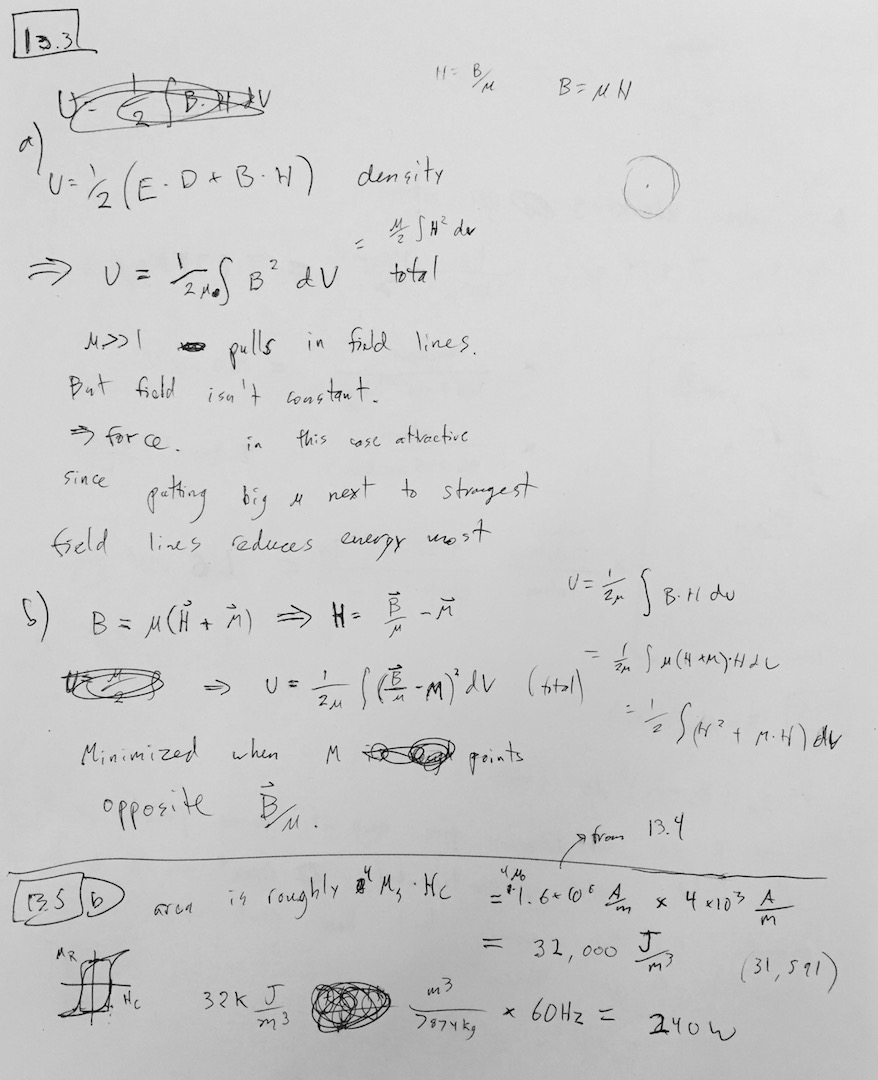



Estimate the diamagnetic susceptibility of a typical solid.
Starting from equation 12.15,
Using this, estimate the field strength needed to levitate a frog, assuming a gradient that drops to zero across the frog. Express your answer in teslas.
From 12.7,
I’ll assume the frog is 0.1 meters tall, has a mass of 0.1 kg, and a volume of (this is consistent with the frog being mostly water). I’ll also assume the magnetic field gradient is constant, so . Solving for ,
Thus the magnetic field is
Estimate the size of the direct magnetic interaction energy between two adjacent free electrons in a solid, and compare this to the size of their electrostatic interaction energy. Remember that the field of a magnetic dipole is
The force between two magnetic dipoles and (with associated fields and ) is , and the characteristic interaction energy is . This will be maximized when and are parallel. From the equation above, we can see that the field strength will be maximized when is antiparallel to . Assuming a separation of 1 angstrom, the total energy is thus
Meanwhile their electrostatic potential is
Using the equation for the energy in a magnetic field, describe why:
A permanent magnet is attracted to an unmagnetized ferromagnet.
The equation of interest for energy density is
For this problem I assume the electric field is zero, so the total energy is
An unmagnetized ferromagnet has a very high , so is reduced by packing more field lines into its extent. The permanent magnet’s field lines are densest closest to its body, so the gradient of the energy describes an attractive force.
The opposite poles of permanent magnets attract each other.
We know that , so
This is reduced when and are anti-aligned.
Estimate the saturation magnetization for iron at 0 K.
I looked up the density, molar mass, and number of valence electrons of iron. My answer also uses the proton mass and electron magnetic moment.
Show that the area enclosed in a hysteresis loop in the plane is equal to the energy dissipated in going around the loop.
Estimate the power dissipated if 1 kg of iron is cycled through a hysteresis loop at 60 Hz; the coercivity of iron is .
Approximately what current would be required in a straight wire to be able to erase a recording at a distance of 1 cm?
As found in problem 6.4 in problem set 4, the magnitude of the magnetic field a distance away from an infinitely long and thin conductor carrying a current is . To erase information stored on we need this field to be about as strong as the coercivity . Thus the current needed is